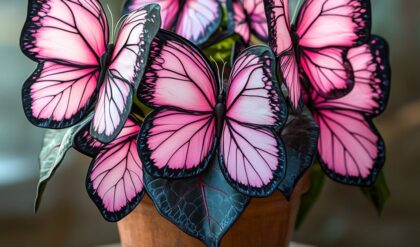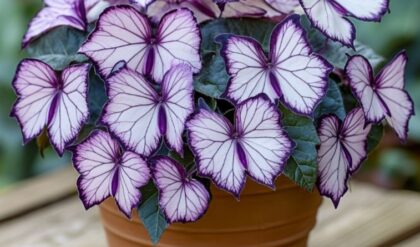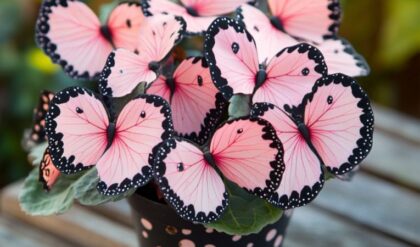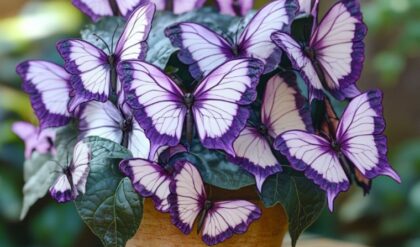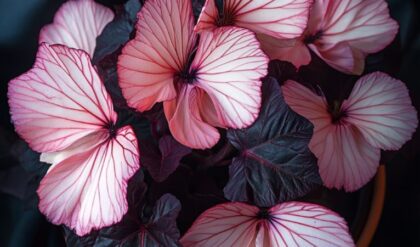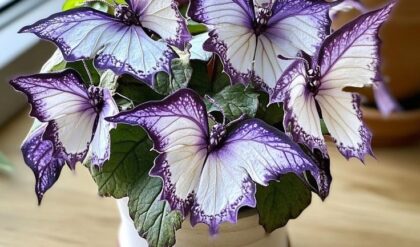The Jacaranda Tree, particularly the variety known as Blue Splendor, has become synonymous with stunning displays of violet-blue blossoms that transform both streets and gardens into mesmerizing landscapes. As we delve into the characteristics and implications of this tree, it becomes clear that its beauty is intertwined with cultural significance, environmental benefits, and the joys of nature.
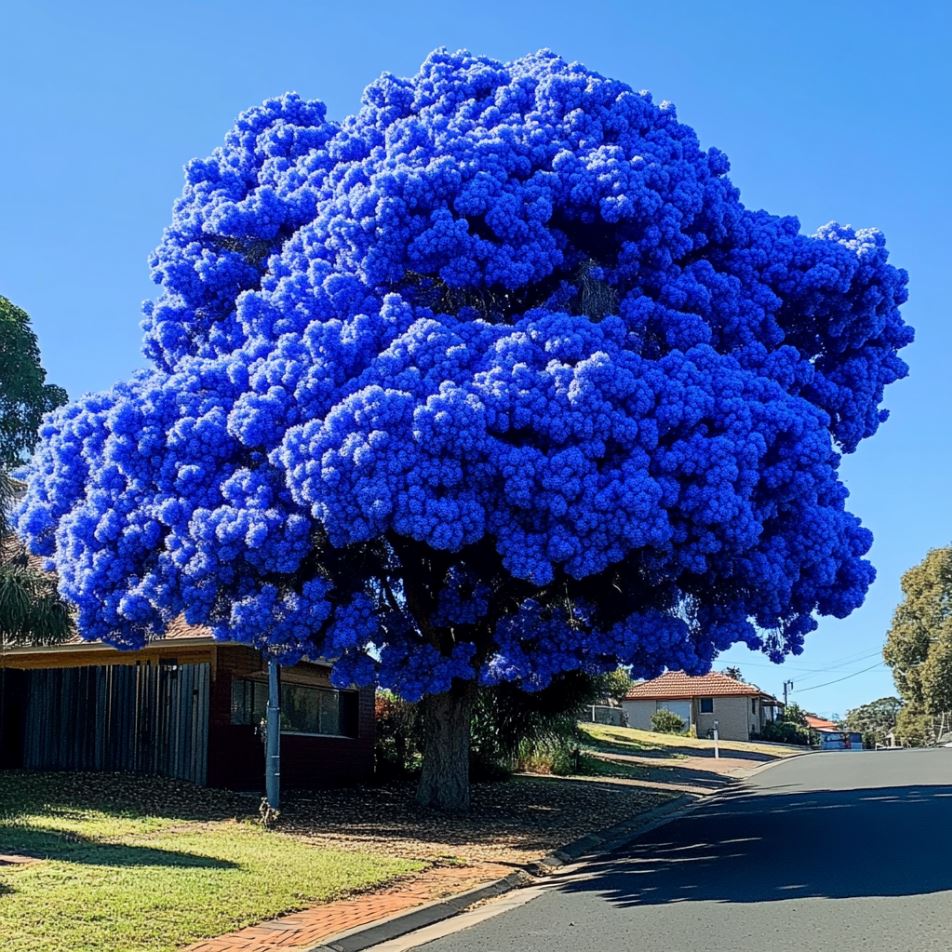
Botanical Attributes and Care Requirements
To cultivate the Jacaranda ‘Blue Splendor’, understanding its basic needs is essential. This tree thrives in full sun, requiring regular watering especially during arid periods to ensure its health and vibrancy. The ideal environment for growth is found in well-draining, slightly acidic soils with temperatures ranging from 65-85°F (18-29°C). This adaptability makes it a suitable choice for various climates, and particularly for urban settings where heat can be an issue.
Optimal Growing Conditions
The Jacaranda ‘Blue Splendor’ is a tree that requires specific growing conditions to thrive. It prefers full sun exposure, meaning it needs at least 6 hours of direct sunlight per day. This is crucial for the tree to maintain its vibrant blooms and healthy foliage.
- Well-drained soil: The Jacaranda thrives in soil that is well-draining, meaning it doesn’t become waterlogged. Slightly acidic soil, with a pH between 6.0 and 7.0, is ideal for optimal growth.
- Moderate temperatures: This tree flourishes in warm climates, with ideal temperatures ranging from 65°F to 85°F (18°C to 29°C). It can tolerate some colder temperatures, but prolonged exposure to frost or freezing conditions can be detrimental.
- Regular watering: During periods of drought or arid conditions, the Jacaranda ‘Blue Splendor’ will require more frequent watering to maintain its health and appearance. Ensuring the soil remains consistently moist, but not waterlogged, is crucial.
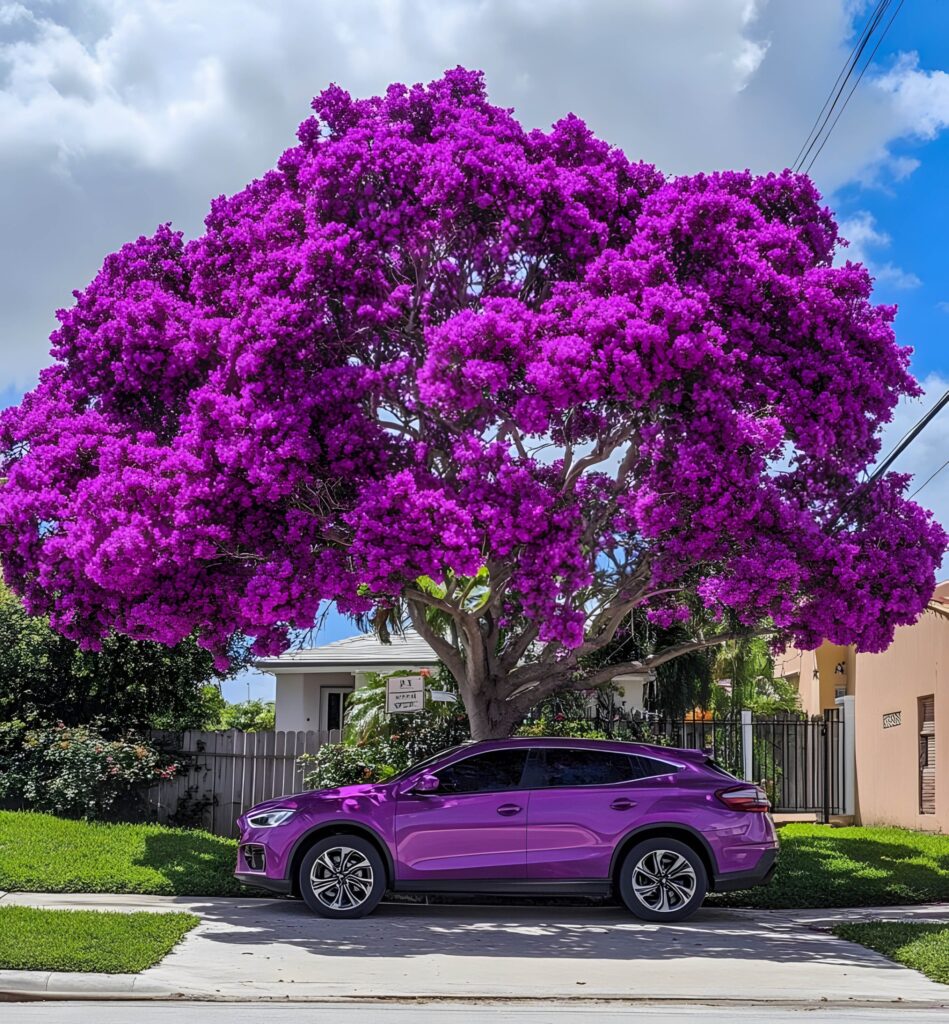
Pruning and Maintenance
Proper pruning and maintenance are essential for the Jacaranda ‘Blue Splendor’ to maintain its shape, promote healthy growth, and ensure a consistent flowering display.
- Pruning: Regularly pruning the tree, typically in late winter or early spring, helps to remove any dead, damaged, or crossing branches. This encourages the tree to focus its energy on producing a lush, vibrant canopy of foliage and stunning purple blooms.
- Fertilization: Applying a balanced, slow-release fertilizer in early spring can help support the tree’s nutrient needs and encourage robust growth throughout the season.
- Pest and disease management: Monitoring the tree for any signs of pests or disease, such as aphids, scale insects, or fungal infections, and taking appropriate action can help maintain the Jacaranda’s overall health and appearance.
By understanding and adhering to the specific care requirements of the Jacaranda ‘Blue Splendor’, gardeners and landscapers can ensure the tree flourishes and continues to captivate onlookers with its breathtaking floral displays.
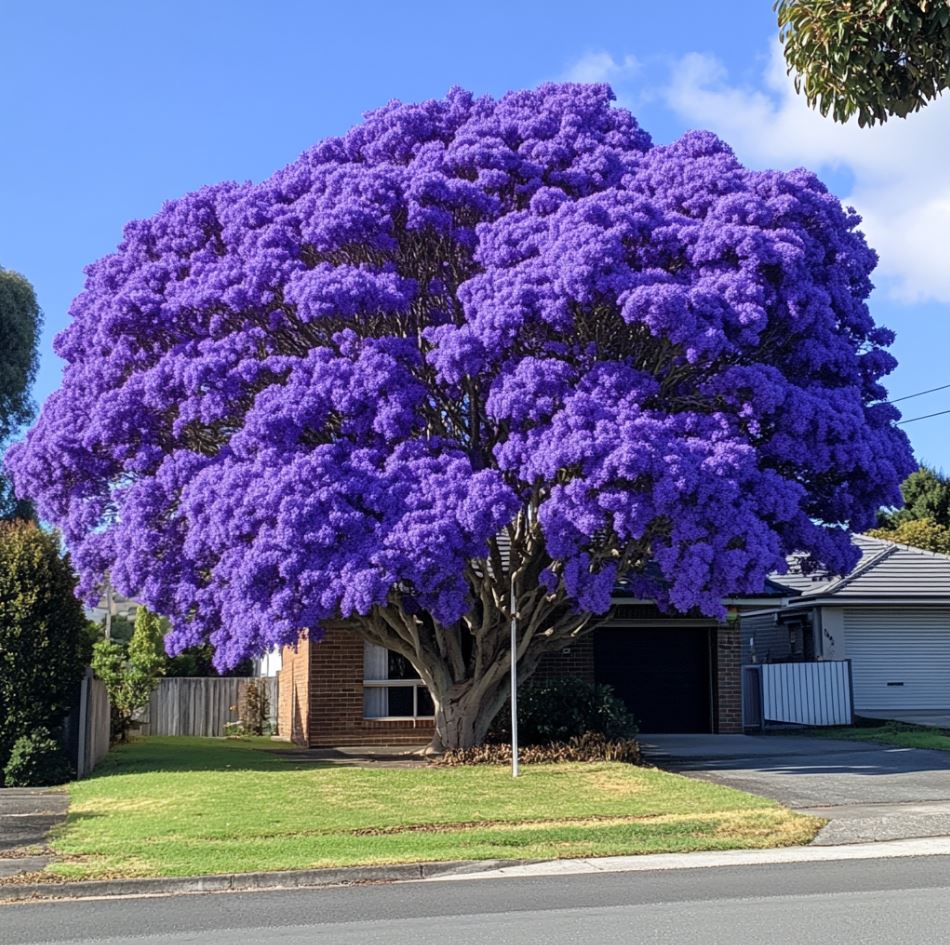
Ecological Benefits and Cultural Significance
Beyond its physical beauty, the Jacaranda plays an integral role in its ecosystem. Frequently planted as a street tree in cities like Los Angeles, it contributes positively by providing shade and improving air quality through its photosynthetic processes. Additionally, as these trees bloom, they create a breathtaking canopy that transforms ordinary streets into magical passages, which not only enhances the aesthetic appeal but fosters community interaction and appreciation for natural beauty.
Contribution to Urban Environments
The Jacaranda ‘Blue Splendor’ is a popular choice for urban landscaping, particularly in cities known for their vibrant streets and lively communities. These trees offer a range of environmental benefits that improve the overall quality of life for city dwellers.
- Shade and temperature regulation: The Jacaranda’s broad canopy provides welcome shade, helping to reduce the urban heat island effect and lower temperatures in surrounding areas. This can lead to decreased energy consumption for cooling buildings and increased comfort for pedestrians.
- Air quality improvement: Through the process of photosynthesis, the Jacaranda tree actively removes pollutants from the air, such as carbon dioxide and particulate matter. This contribution to cleaner air can have a positive impact on the respiratory health of urban residents.
- Biodiversity enhancement: The Jacaranda’s flowers and foliage attract a variety of pollinators, including bees, butterflies, and birds, which can increase the overall biodiversity of urban ecosystems.
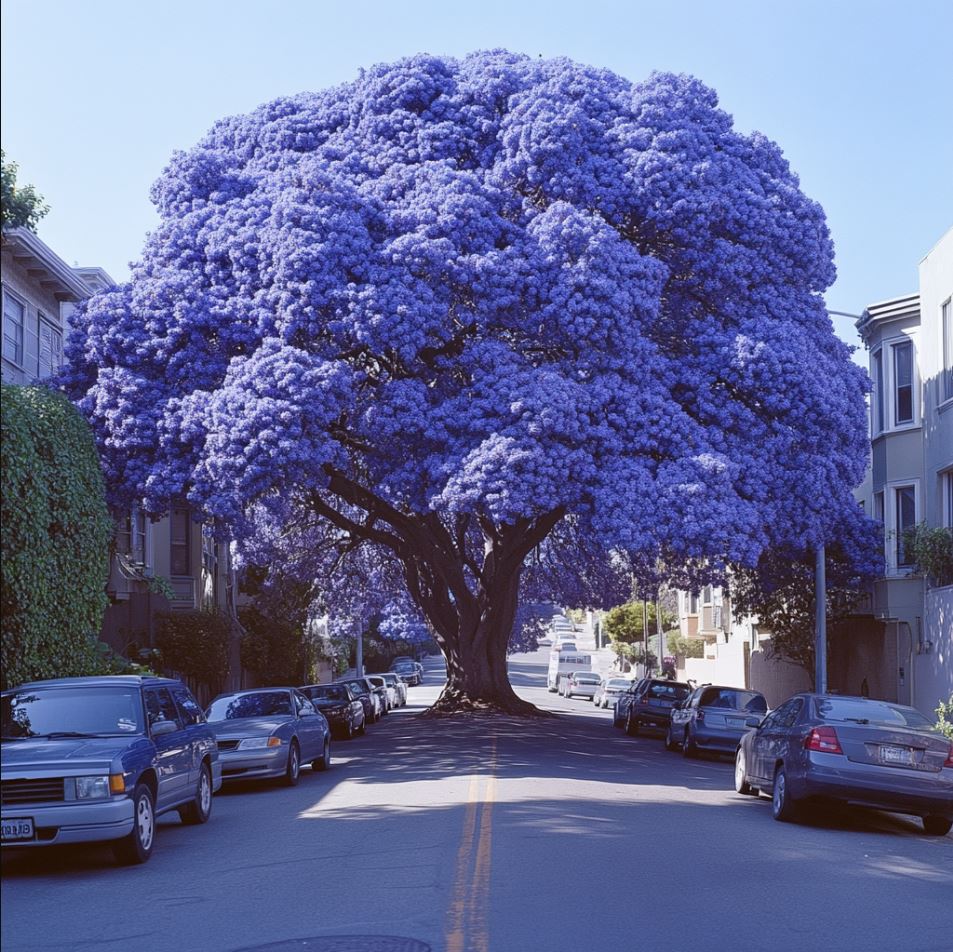
Cultural Significance and Community Engagement
The Jacaranda ‘Blue Splendor’ has become deeply ingrained in the cultural fabric of many communities around the world, particularly in regions where it is commonly found.
- Seasonal celebrations: In cities like Mexico City, the blooming of the Jacaranda trees is a much-anticipated annual event that sparks celebrations, festivals, and community gatherings. The vibrant purple canopy is seen as a symbol of spring and renewal, fostering a sense of shared experience and pride among residents.
- Artistic inspiration: The Jacaranda’s striking appearance has captivated artists, photographers, and writers, who have used the tree as a muse for their creative endeavors. The shimmering purple blooms have become a recognizable icon, appearing in various forms of art and media.
- Community engagement: The presence of Jacaranda trees in public spaces, such as parks and streets, encourages community interaction and appreciation for the natural world. People often gather under the tree’s canopy, enjoying the beauty, shade, and sense of tranquility it provides.
The Jacaranda ‘Blue Splendor’ has evolved beyond just a visually stunning tree; it has become a symbol of cultural identity, seasonal change, and the importance of integrating nature into urban environments.
Health Benefits and Nutritional Value
Interestingly, the Jacaranda doesn’t just offer visual delight; there are claims about its potential health benefits as well. Some sources suggest that parts of the tree may possess medicinal properties, adding another layer to its value beyond mere aesthetics. For instance, in traditional practices, certain components could be utilized for their anti-inflammatory effects, although more research would be necessary to validate these claims comprehensively.
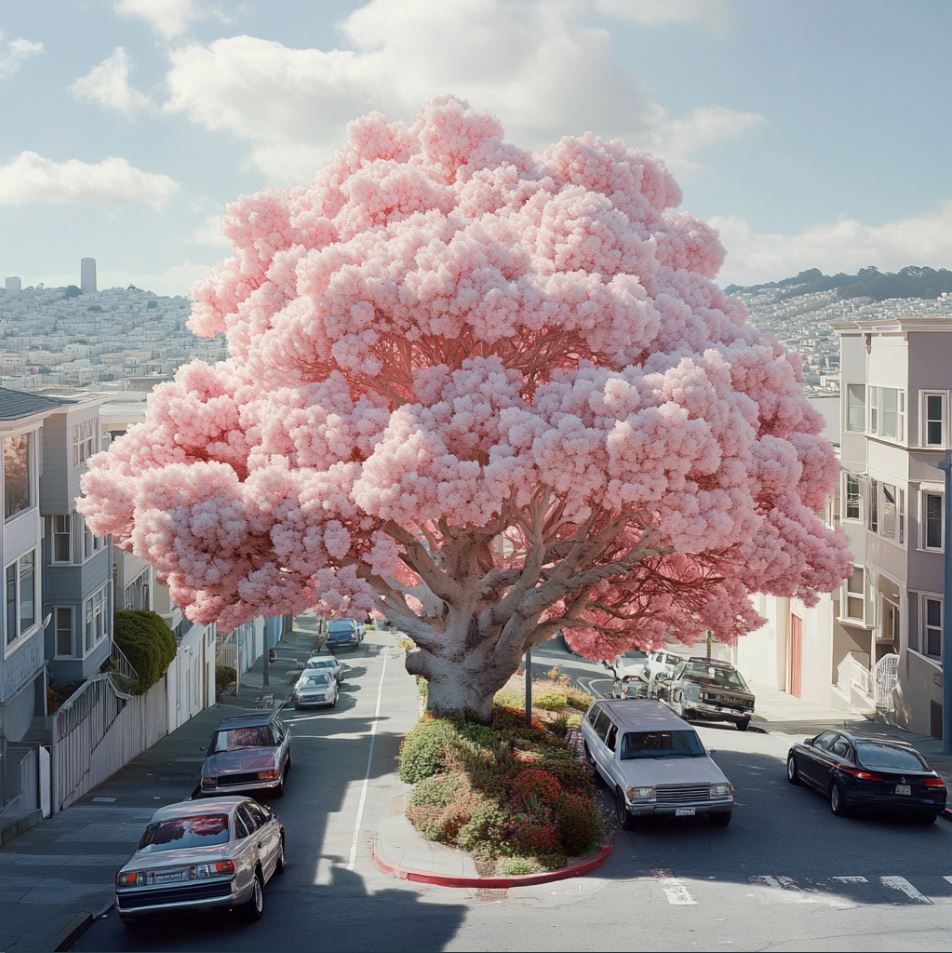
Potential Medicinal Properties
While the Jacaranda ‘Blue Splendor’ is primarily renowned for its aesthetic appeal, there are intriguing reports of potential medicinal uses for various parts of the tree.
- Anti-inflammatory effects: Some traditional medicinal practices have utilized components of the Jacaranda tree, such as the leaves or bark, for their purported anti-inflammatory properties. These claims suggest the tree may possess compounds that could help alleviate certain inflammatory conditions.
- Antimicrobial activity: Studies have indicated that extracts from the Jacaranda tree may exhibit antimicrobial properties, potentially inhibiting the growth of certain bacteria and fungi. This could potentially lead to the development of natural-based treatments or supplements.
- Antioxidant properties: Preliminary research has hinted at the Jacaranda’s potential to contain antioxidant compounds, which could offer protection against cellular damage and oxidative stress. However, more extensive clinical trials are needed to substantiate these findings.
Nutritional Composition
Beyond its potential medicinal benefits, the Jacaranda ‘Blue Splendor’ may also possess some nutritional value, although the research in this area is limited.
- Edible parts: While the Jacaranda is not typically consumed as a food source, some reports suggest that certain parts of the tree, such as the flowers or young leaves, may be edible and potentially nutritious.
- Phytochemical profile: Preliminary analyses have identified the presence of various phytochemicals, such as flavonoids and terpenes, in the Jacaranda. These compounds may contribute to the tree’s potential health benefits and could be the focus of future nutritional research.
- Caution: It is important to note that the consumption of any parts of the Jacaranda tree should be approached with caution, as some components may be toxic if not properly prepared or consumed in excess. Comprehensive safety evaluations and expert guidance are recommended before exploring the tree’s potential as a food or supplement.
While the health and nutritional claims surrounding the Jacaranda ‘Blue Splendor’ require further scientific investigation, the tree’s potential to offer more than just aesthetic value is an intriguing area of exploration.
The Hypothetical Impact on Urban Landscapes
Imagine a cityscape devoid of greenery, where concrete reigns supreme. Now envision urban areas that embrace the Jacaranda, painting the skyline with vibrant shades of blue each spring. Such scenarios illuminate the importance of integrating natural elements into our built environments. As cities face challenges related to climate change, incorporating trees like the Jacaranda could serve as a strategy for enhancing urban biodiversity and resilience against environmental shifts.
Enhancing Urban Biodiversity
The integration of Jacaranda ‘Blue Splendor’ trees into urban landscapes could have a significant impact on the local ecosystem and biodiversity.
- Habitat creation: The Jacaranda’s lush foliage and flowers provide valuable resources, such as nectar and shelter, for a variety of pollinators and other wildlife. This can help increase the overall biodiversity of urban areas.
- Ecological connectivity: By strategically planting Jacaranda trees in parks, along streets, and in other public spaces, a network of green corridors can be created, allowing for the movement and dispersal of various species within the urban environment.
- Resilience to climate change: As cities face the challenges of climate change, the Jacaranda’s adaptability to a range of climates and its ability to provide shade and regulate temperatures can contribute to the overall resilience of urban ecosystems.
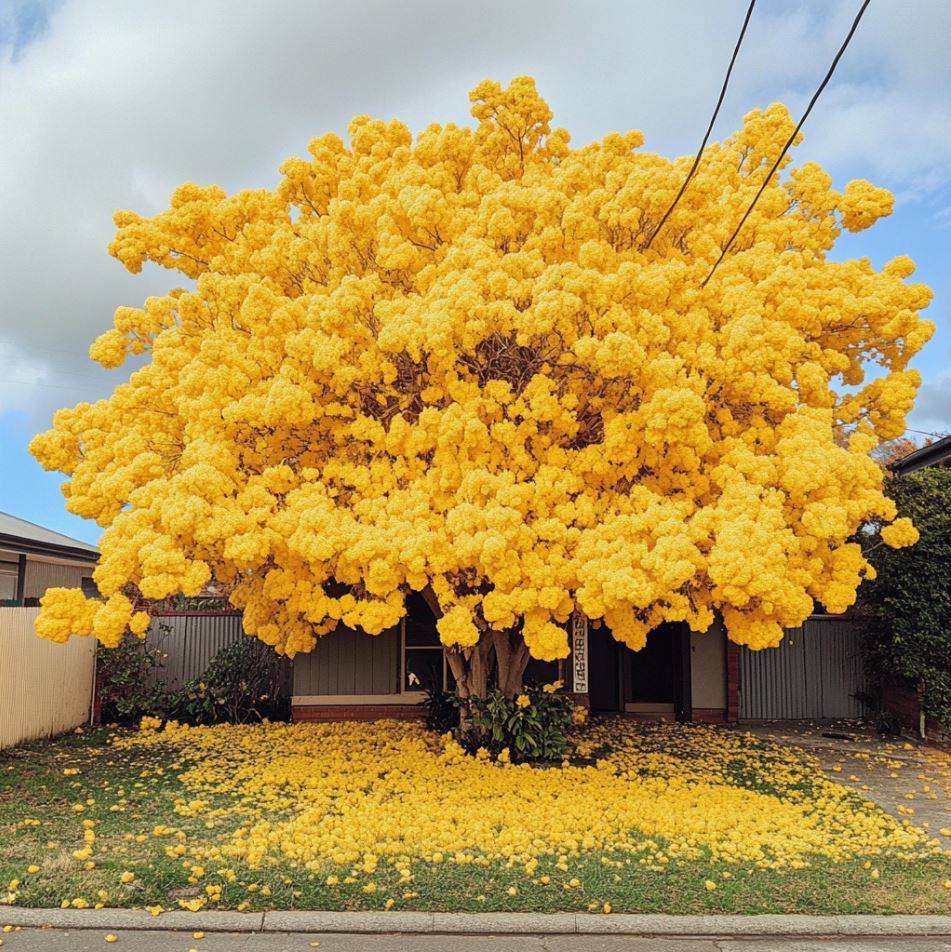
Improving Urban Aesthetics and Well-being
The presence of Jacaranda ‘Blue Splendor’ trees in urban settings can have a profound impact on the visual appeal and the overall well-being of city dwellers.
- Aesthetic transformation: The striking purple blooms of the Jacaranda can transform the urban landscape, creating a sense of beauty, wonder, and enchantment. This can enhance the city’s overall aesthetic appeal and provide a visually captivating experience for residents and visitors alike.
- Psychological and emotional benefits: Numerous studies have demonstrated the positive impact of nature on human well-being. The presence of Jacaranda trees in urban spaces can foster a sense of relaxation, calmness, and connection to the natural world, which can have a beneficial effect on mental health and overall quality of life.
- Community engagement and social cohesion: As mentioned earlier, the Jacaranda’s ability to bring people together and encourage community interaction can contribute to the development of stronger social bonds and a greater sense of belonging within the urban environment.

Conclusion
The Jacaranda ‘Blue Splendor’ embodies much more than just a pretty flower; it is a testament to the intersection of beauty, ecology, culture, and potential human well-being, inviting us to reflect on the deeper meanings of nature’s offerings in our lives. From its captivating floral displays to its environmental benefits and cultural significance, this remarkable tree has the power to transform both physical and emotional landscapes.
As we continue to navigate the challenges of urbanization and environmental change, the Jacaranda ‘Blue Splendor’ stands as a shining example of how the integration of natural elements can enrich our built environments, foster community engagement, and cultivate a deeper appreciation for the natural world. By embracing the Jacaranda and its multifaceted significance, we can unlock the potential for more vibrant, resilient, and harmonious cities that balance the needs of humans and the natural world.
